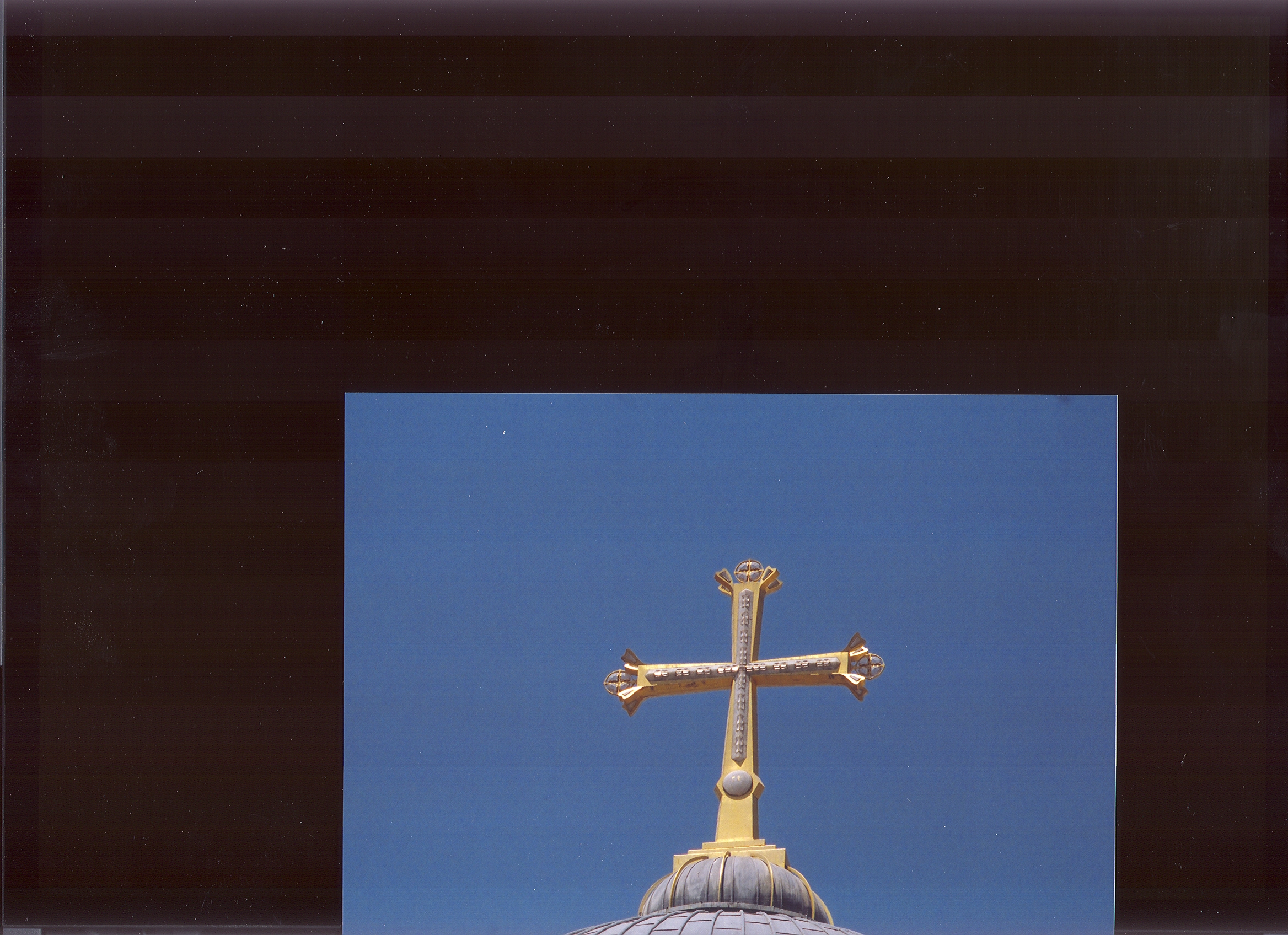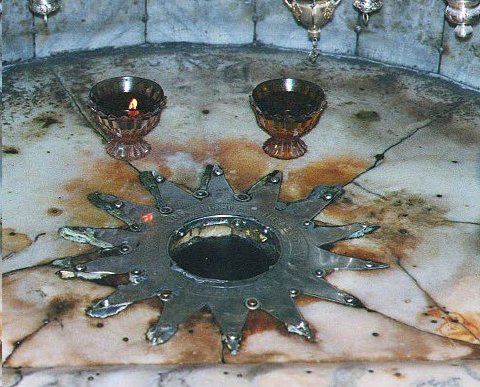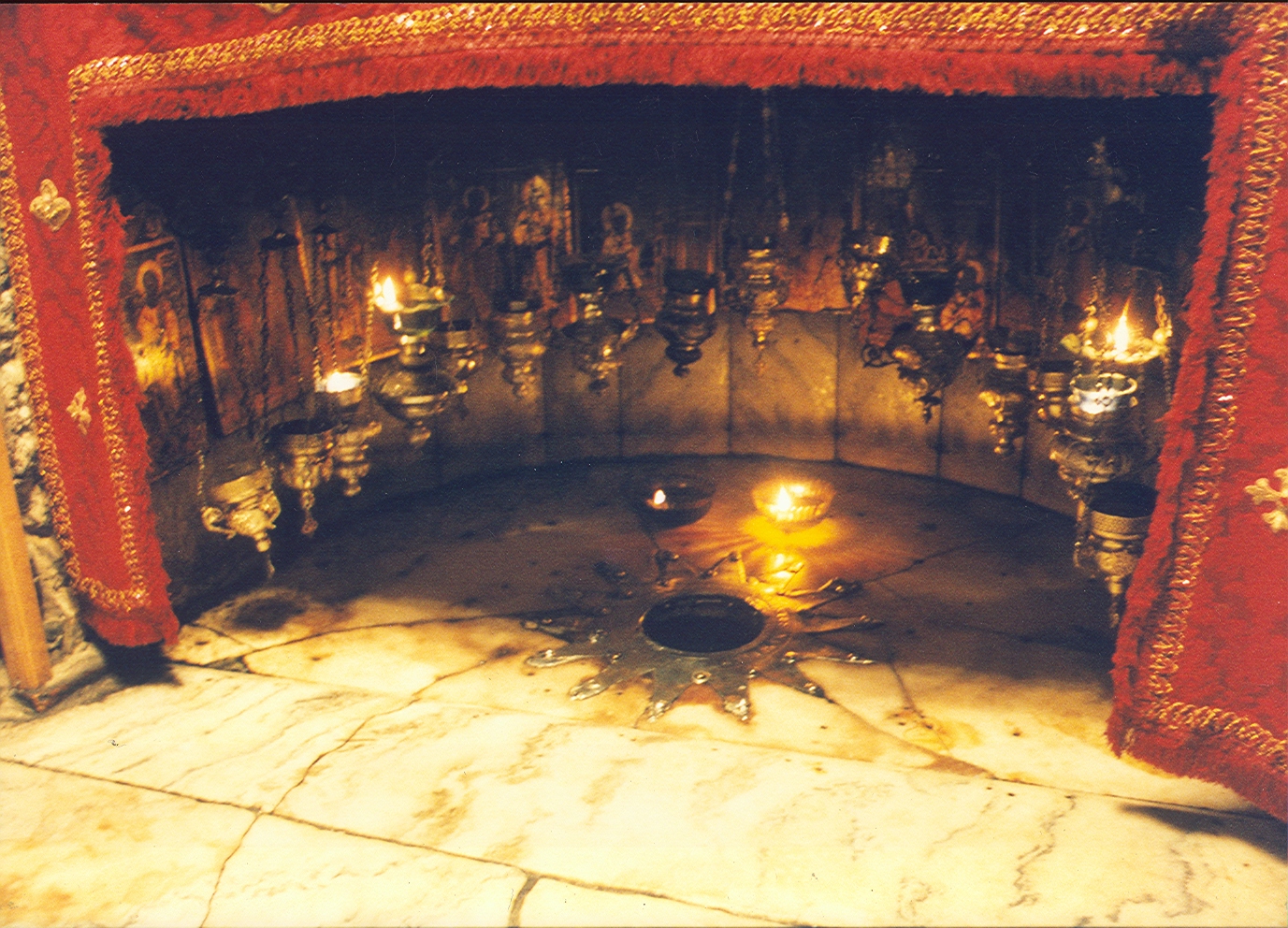 gs: in Hebrew, the House of Bread, and in Arabic, the House of Meat.
gs: in Hebrew, the House of Bread, and in Arabic, the House of Meat.
Bethlehem
(pictures: Fr. Tomas)
A few miles south of Jerusalem along a charming,
biblical road, is the hilltop town of Bethlehem. The name Bethlehem has two
meanin gs: in Hebrew, the House of Bread, and in Arabic, the House of Meat.
gs: in Hebrew, the House of Bread, and in Arabic, the House of Meat.
On both sides of the road are vast, rocky pastures where shepherds tend
their flocks of sheep and goats. One of these is aptly called the
(Shepherds' Fields) because here the angels announced the birth of Jesus. It
was also in these fields that the tender love story between Ruth and Boaz
unfolded as narrated in the Book of Ruth. Their son, Obed, was to become the
grandfather of King David, who was born in Bethlehem a thousand years before
the birth of Jesus. For Christians, Bethlehem is a holy city because Jesus
was born there. Those days, an edict of Augustus came out for the census of
the entire empire. One of the principal functions of the Roman
administration was to impose taxes. Therefore, the census ordered by
Augustus, and supervised by the local governor Publius Sulpicius Quirinus,
was certain to provide ready monies to the authorities. Since law decreed
that every landowner had to declare his property for purposes of taxation,
Joseph had to leave Nazareth and return to Bethlehem ... together with his
bride, Mary, who was with child. While they were in that place, the moment
of birth arrived and there she brought forth her firstborn son, wrapped him
in swaddling clothes and laid him in a manger because there was no room for
them at the inn). This is how the Gospel of Luke describes the event
destined to change the history of mankind. The actual birth date of Jesus is
disputed: for Roman Catholics it is December 25, for Greek Orthodox it is
January 6 and for the Armenians, January 18. In contempt for t
of Augustus came out for the census of
the entire empire. One of the principal functions of the Roman
administration was to impose taxes. Therefore, the census ordered by
Augustus, and supervised by the local governor Publius Sulpicius Quirinus,
was certain to provide ready monies to the authorities. Since law decreed
that every landowner had to declare his property for purposes of taxation,
Joseph had to leave Nazareth and return to Bethlehem ... together with his
bride, Mary, who was with child. While they were in that place, the moment
of birth arrived and there she brought forth her firstborn son, wrapped him
in swaddling clothes and laid him in a manger because there was no room for
them at the inn). This is how the Gospel of Luke describes the event
destined to change the history of mankind. The actual birth date of Jesus is
disputed: for Roman Catholics it is December 25, for Greek Orthodox it is
January 6 and for the Armenians, January 18. In contempt for t he pilgrims
who had venerated this place since the earliest times, Emperor Hadrian, in
135 A. D., consecrated the woods and caves here to Adonis and introduced his
own pagan cult. In 332, Constantine the Great, after having the woods cut
down, ordered the construction of a basilica on the spot. The present
structure is a combination of Constantine's basilica (much of which was
destroyed two centuries after its construction), Justin's sixth century
renovations and later Crusader repairs. The basilica was miraculously spared
during the Persian invasion of 614, because the invaders found a painting of
the three Magi, whom they took to be Persians, decorating the pediment.
he pilgrims
who had venerated this place since the earliest times, Emperor Hadrian, in
135 A. D., consecrated the woods and caves here to Adonis and introduced his
own pagan cult. In 332, Constantine the Great, after having the woods cut
down, ordered the construction of a basilica on the spot. The present
structure is a combination of Constantine's basilica (much of which was
destroyed two centuries after its construction), Justin's sixth century
renovations and later Crusader repairs. The basilica was miraculously spared
during the Persian invasion of 614, because the invaders found a painting of
the three Magi, whom they took to be Persians, decorating the pediment.
In 101, Baldwin I was crowned Crusader king there, and twenty years later, Baldwin 11 and his wife were, as well. And then a long decline arrived. In 1646, the Turks melted down the lead from its roof to make cannonballs. About the same time, the Christian community decided to block up the main entrance except for a very small opening, to prevent the locals from riding into the church on horse Corinthian capitals line the double aisles on either side of the central nave. Above them, one sees the remnants of mosaics, done in 1169, which have a gold background and depict the ancestors of Jesus and the first seven ecumenical councils. Of these councils, only the first at Constantinopole has survived in its entirety, while fragments of the others, Nicaea, Ephesus and Chalcedon, can also be seen
Holy Land Greece Pilgrimages Pilgrimages Map Index Espaņol English Index